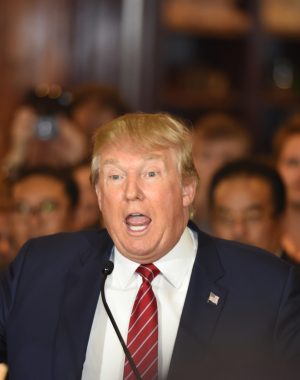With all of the political drama and turmoil in Washington, it is a good counterpoint that America, Europe, Asia, and the emerging markets are all growing together for the first time since the Great Recession. The cover article on the March 18 Economist bears the title: On the up: The world economy’s surprising rise.
The U.S. Federal Reserve raised rates for the second time in three months due to a strong U.S. economy and because of growth everywhere else. Fears of a Chinese contraction have receded; capital expenditures in Japan are at a three-year high; the euro-zone has been accelerating since 2015; and euro-zone unemployment is at its lowest since 2009. Export growth in South Korea is up more than 20%, and the American economy has added new jobs for 77 months in a row. For investors, the important conclusion here is that IT’S NOT ALL ABOUT TRUMP! The American and global economies are much, much bigger than Trump.
An Offset for President Trump’s Rough Start
The force of U.S. economic growth and the synchronized global upturn are helping to offset Trump’s first-inning stumbles. With the Republican failure to repeal and replace the Affordable Care Act (ACA), President Trump is signaling a -willingness to build a coalition with Democrats. A bipartisan initiative may be a total pipe dream, but Trump was successful because he ran against both Democrats and Republicans, allowing himself to be associated with none of their baggage. He is loyal to none of them, it would appear.
The Bipartisan Prospect
As an independent outsider, Trump may have more success achieving some of his agenda with Democrats than he will with the Republican Freedom Caucus (formerly the Tea Party). The American Health Care Act authored by Paul Ryan betrayed many of Trump’s campaign promises to cover everyone with better health care and lower costs. Trump’s aversion to details clearly hurt his ability to promote the Republican Health Care bill. Although, if he understood the details, he may have noticed that it betrayed everything he promised in his campaign. Important, independent, -bipartisan legislation would make Trump a true revolutionary.
If Trump is to be successful, he will need to be more involved in drafting and understanding the legislation he wants to sign into law. Too much delegation and ignorance do not work in Washington. It seems remote that some Democrats and Trump could work together, but everything that put Trump in the White House has been a surprise. Trump’s promises for universal health care and improving America’s infrastructure clearly appeal to Democrats. Trump will become frustrated if he can pass no legislation, so turning to Democrats could allow him to score some legislative wins. Sounds preposterous, but much of this year has been preposterous.
The Corporate Tax Reform Challenges
Other initiatives, such as corporate tax reform, are likely to encounter resistance from Democrats. From the investment perspective, Goldman Sachs estimates that if the corporate tax rate were cut from 35% to 20%, it would lift S&P500 earnings by 10%. The possibility of a Border Adjustment Tax (BAT) or tariffs is a non-starter with Walmart, the largest private employer in America. Not a good idea to wound the private sector’s employment leader. As trading partners both raise tariffs, the world economy shrinks for everyone. Harvard economist Robert Lawrence writes:
It makes no sense for us to make things at home if it costs less to import them. We raise living standards by sending the Chinese airplanes that we exchange for their clothes.
The Infrastructure Plan
Trump’s proposed budget is another disconnect from his campaign promises such as spending a trillion dollars on infrastructure investments, yet his budget cuts the Department of Transportation by 13%, reduces funding for AMTRAK, and zeroes out funding for new transit projects. Is it possible that working with Democrats would help the president fulfill some of his promises? Remember: IT’S NOT ALL ABOUT TRUMP!


